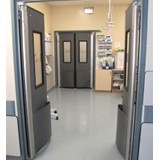This major funding commitment follows the historic healthcare agreement reached with the states and territories through COAG last year, and demonstrates the Rudd Government’s commitment to improving health and hospital outcomes for all Australians.
This investment tackles key pressure points in the public health system, providing more funding for public hospitals and to train doctors and nurses, our critical health workforce.
Public hospitals
The 2009-10 Budget provides record funding for public hospitals:
- A total of $60 billion for public hospital services over the next five years;
- $750 million to reduce pressure on emergency departments;
- A new indexation formula that better reflects rising health costs and the cost of technology; and
- $500 million to provide additional sub-acute care services, which enable many older people to leave hospital earlier, helping to free up hospital beds.
This is compared to the last Agreement under the former Government which cut $1 billion from public hospital funding.
Training more doctors and nurses
The 2009-10 Budget delivers on the Rudd Government’s commitment at COAG to provide $1.1 billion over the next four years to train more doctors, nurses and allied health professionals.
This investment includes:
Almost $500 million to support the expansion of pre-professional clinical training places by 2013. This funding will support clinical training for an expected increase in health-related undergraduate student numbers of 12,000 – from 66,000 in 2009 to 78,000 in 2013;
$86.2 million to provide an additional 212 ongoing GP training places – increasing the number of GP training places by 35 per cent – as well as 73 additional specialist training places in the private sector;
$175.6 million for capital infrastructure to support training of the future health workforce, including funding to construct new and mobile high-tech simulated learning environments; and
The establishment of a National Workforce Agency – to better coordinate and expand capacity for clinical training across a range of workforce settings, and assist with workforce planning.
There is still much to do to tackle the previous Government’s legacy of workforce shortages – but the Rudd Government is committed to tackling these shortages and reforming the health and hospitals system for all Australians.
A new era of accountability
A new, more transparent system of performance reporting will include a comprehensive range of performance indicators including hospital-by-hospital reporting on areas such as super-bug infection rates.
The COAG agreement also includes funding to introduce a nationally consistent approach to Activity Based Funding for hospital services – to enhance public accountability of public hospital spending.
This is important because it means that all governments will be able to accurately compare the differences in the cost of delivering services across hospitals, across states, and eventually across the public and private sectors.
Investing in prevention
The 2009-10 Budget delivers on the Rudd Government’s commitment at COAG to fund the single largest investment ever made in health promotion in Australia – focused on tackling the health problems caused by tobacco, obesity and excessive consumption of alcohol.
In partnership with the states and territories, the Australian Government will invest $872.1 million over six years in preventing lifestyle risks that cause chronic disease.
The agreement will also establish a national preventative health agency to advise Australian Governments on preventative health programs – as suggested by the National Health and Hospitals Reform Commission, the Preventative Health Taskforce and the 2020 Summit.
Closing the Gap
The 2009-10 Budget also delivers on the Rudd Government’s contribution of $805.5 million to a National Partnership with the states and territories to tackle Indigenous chronic disease – the greatest contributor to the life expectancy gap.










